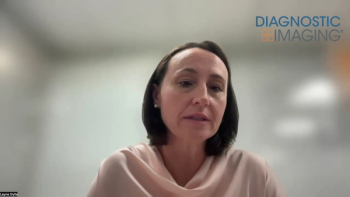
Deficit Reduction Act slams radiologists, benefits nonradiologists
Radiologists have felt the effects of the Deficit Reduction Act of 2005 far more than nonradiologist imagers, according to a study in the Journal of the American College of Radiology.
Radiologists have felt the effects of the Deficit Reduction Act of 2005 far more than nonradiologist imagers, according to a study in the Journal of the American College of Radiology.
When Congress slashed Medicare reimbursement for medical imaging procedures, nonradiologists offset the loss by referring more patients to their own equipment (JACR 2009;6:620-625).
During 2007, the first year the DRA came into effect, MRI office volume dropped 2% among radiologists but increased 7.6% among nonradiologists, according to Dr. David C. Levin, a professor and former chair of the radiology department at Thomas Jefferson University Hospital in Philadelphia.
CT volume, however, increased for both groups. Volume went up by 2.9% for radiologists but jumped 18.1% for nonradiologists.
"That's a significant difference," said Levin, lead author of the study. "In terms of payments, among radiologists they went down by 5.2%. Among nonradiologists they went up by 8.3% and continue to increase as a result of self-referral."
Other government and peer-reviewed studies have shown when physicians can refer patients to their own imaging equipment or have a financial interest in the equipment, utilization increases, according to Levin.
"Radiologists warned at the time of the DRA's passage that it would have little impact on nonradiologist utilization because the self-referring physicians would simply ramp up imaging volume to make up for any decrease in the per-scan reimbursement," he said.
The current study illustrates exactly that situation.
"This is a big concern for our healthcare system because self-referral drives up utilization and drives up cost," Levin said.
The trends will continue to unfold over the next few years and it is important to continue monitoring them, he said.
Newsletter
Stay at the forefront of radiology with the Diagnostic Imaging newsletter, delivering the latest news, clinical insights, and imaging advancements for today’s radiologists.



























